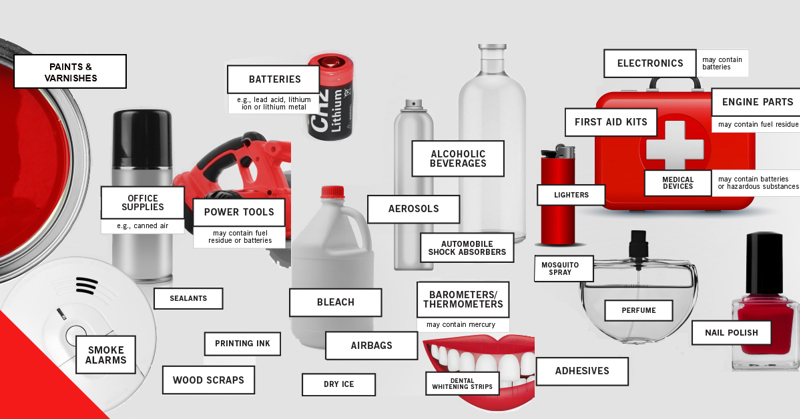Every day, parcels containing hazardous materials (hazmat) are transported across the country and across the globe. The good news is that the U.S. Department of Transportation (DOT) protects the public by strictly regulating businesses introducing hazardous materials into the stream of commerce. The bad news for shippers of hazardous goods: you better understand the regulations, or you will face sanctions, penalties, and if grossly negligent … jail time. And rightly so. But, while you may be doing your best to control your hazmat shipments, there are some things that may be slipping through the cracks, putting your customers, staff, and company at risk.
According to the DOT, each year approximately 1,500 transportation incidents occur when undeclared hazardous materials are shipped.
As pointed out in a guest blog —“The Top 6 Things Shippers Don’t Know about Hazmat—but Probably Should”— written by our partner Labelmaster, there are some key steps to take to make sure all of your hazmat shipping is in compliance, and that partnership between Labelmaster and Pierbridge helps to automate the process a bit more.
"Shipping dangerous goods involves complex rules and regulations that are constantly changing, so ensuring compliance can be challenging and time-consuming for shippers," said Labelmaster president Alan Schoenin a press release announcing the partnership. "Integrating our Dangerous Goods Information System (DGIS) with Transtream will save customers time by having the information available in a single window when they have a dangerous goods shipment.”
With the holidays approaching, shippers need to be vigilant as hazmat shipping regulations cover some everyday things, many of which can make for some common holiday gift packages:
Camping Gear and Camping Equipment
These include items such as ammunition, batteries, cooking stoves, flammable gas, fire starting pastes, flammable liquids, heat producing packets, lighters, matches, signal flares, or cooking/heating fuel.
Computer Equipment
Uninterruptible power supplies with electrical storage batteries require special shipping. Magnets in speakers and printing ink also have hazmat implications.
Lawn Equipment
Among other items in this category, lawn mowers and weed trimmers may contain hazardous materials such as fuels and/or batteries and need to be shipped as hazmat.
Batteries
Sure, they aren’t included with kids’ toys very often, but plenty of the hottest electronic gifts come with them. There are a number of different types of batteries that are regulated as hazardous materials, including spillable lead-acid batteries and many lithium batteries. Make sure you know what is in the products you are selling and shipping, and label the packaging correctly to stay in compliance.
Cleaning supplies (OK, not the best gift, but great for post-holiday party cleanup!) Shipping household goods that can contain chemicals, results in the need for hazmat placards. These items include paints, bleaches, and spray cans under pressure.
Cosmetics
They may contain flammable liquids.
Electronic Equipment
Many electronics contain powerful magnets, mercury in switches, or any one of a variety of batteries and uninterruptible power supplies containing electrical storage batteries, which need to be packed and labeled correctly.
Perfume
This old standby for Aunt Norma’s stocking may contain flammable liquids, no matter how nice it smells.
Alcohol
This common gift is a definite fire hazard and needs to be labeled accordingly.
Dealing with the shipping of hazmat items, whether obvious or not, is not easy. Luckily, with the right DGIS and parcel shipping software, hazmat shipping is a breeze.
